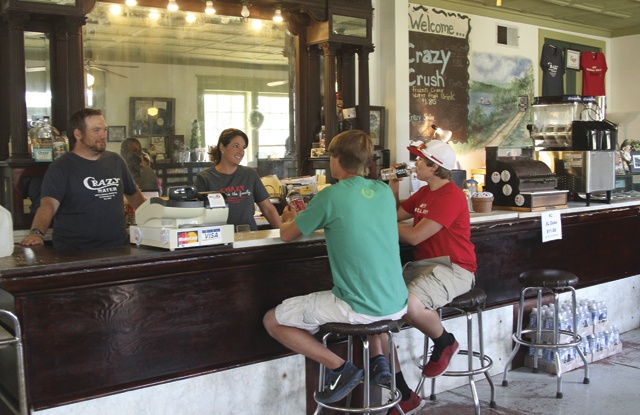Water plays a starring role in Mineral Wells’ history—and its present, as well.
Visitors to the small city about 50 miles west of Fort Worth can view tantalizing glimpses of its storied past as one of the country’s premier spa resorts and explore the area’s distant past at the bottom of an ancient sea.
A stroll around downtown gives one a sense of the prosperity that sprang from the earth around the turn of the 20th century. A mineral-rich aquifer tapped by a well driller in the 1880s spurred the establishment of dozens of businesses that catered to thousands of tourists who arrived to drink or bathe in the water, which gained the reputation for curing ailments both physical and mental.
Remnants of that water boom—downtown streets lined with brick buildings that today house a few antique shops and a collection of Victorian-era homes—remain. Looming over them all is the abandoned but still impressive Baker Hotel, a 450-room, 14-story edifice that opened in 1929 and closed in the 1970s. Gazing at the crumbling structure, it’s easy to imagine the days when the once-grand hotel hosted political conventions and Hollywood stars.
Just blocks from the hotel is the only remaining commercial source of the town’s mineral water, the Famous Mineral Water Company. The company, founded in 1904, ships its Crazy Water to several states. It also has recently begun offering visitors the chance to soak. For $28, you get a bottle of their mineral water in one of four formulations to sip as you settle into a deep bathtub in a quiet room and relax in a warm bath.
Water helped form another city attraction, with a history going back 300 million years. At the Mineral Wells Fossil Park, visitors can pick through sand and rocks at a former city quarry to find the remains of prehistoric creatures that lived there when that area of Texas was covered by a shallow sea.
In about an hour’s worth of casual hunting, I collected a pocketful of interesting specimens, including mollusk shells and bits of crinoid, a type of seabed-dwelling animal. There is no charge to look for or to take home fossils for personal use, but commercial collecting is forbidden. To get to the park, follow the partially paved Indian Creek Road, just west of town off U.S. 180. Take plenty of water. If I went again, I’d bring a garden rake for easier sifting.
Water plays a big role in a more colorful city attraction, this one about 3 miles east of town off U.S. 180. The Clark Gardens Botanical Park is a lush oasis in the middle of mesquite-dotted ranchland. Its 35 acres of carefully tended gardens, which began as the private garden of founders Max and Billie Clark, include hundreds of species of trees and plants in a variety of settings. Lakes, fountains, pavilions and statuary invite visitors to linger. One of my favorite features was an extensive model train layout that incorporated scenery and structures made of natural materials.
After all that traipsing, a rest was in order. The Silk Stocking Row bed-and-breakfast, housed in a turn-of-the-century mansion a couple of blocks from the Famous Mineral Water Company, provided a comfortable and peaceful respite. Hosts Wilene and Chuck Manis offer five themed rooms and a hearty breakfast to start the day.
Whether it’s history, natural beauty or a peaceful day off, Mineral Wells lets you soak it all in.
——————–
Kevin Hargis is a staff copy editor.


